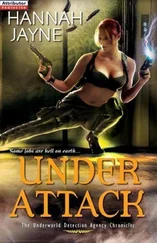However, the most obvious place in London to shelter underground was the one the government refused to sanction. Although tube stations had been used as shelters during air raids in the First World War, this was forbidden at the start of the Second. The reasons were several: the first was the necessity of keeping people and goods moving during the blitz, of ferrying the injured or homeless away and of bringing essential supplies to the stricken areas. Another was the restricted access to many tube stations: the deep, narrow stairways and escalators would be hazardous if a panicking mass of people converged on them (a fear that was to be realised not during the blitz but in the Bethnal Green tube disaster in March 1943, when 173 people were killed in such a crush). Fear of flooding if the Thames was bombed was another real concern: before the war twenty-five heavy, electrically operated gates were installed at stations on either side of the river at Waterloo, Charing Cross and London Bridge which could be closed within a minute of the order being received from the control room at Leicester Square. And a fourth concern was the fear of a ‘shelter mentality’ when thousands of people would crowd underground and, feeling safe in their troglodyte existence, would refuse to re-emerge, with disastrous consequences for war production. *
However, on the first night of the blitz East Enders defied official policy and appropriated their own deep shelters by buying a penny-halfpenny ticket for a short journey on the tube, and refusing to come up again, camping in their thousands on the cold stone platforms with no sanitation or refreshment until morning. It was a fait accompli which, predictably, the Daily Worker celebrated as a people’s victory when on 13 September 1940 2,000 people swarmed down the stairs at Holborn station as they had done on previous nights, and ‘The LPTB [London Passenger Transport Board] officers seem to have given up on any attempt to keep them out.’ Some stayed in stations near to where they lived, others travelled ‘up West’ until they found less crowded platforms. All felt safer down the tubes, particularly since the sounds of air raids raging overhead were all but blotted out, but in the early days all were uncomfortable, often cold and frequently hungry.
Since so many children were evacuated at this time, some London schools were closed, including ten-year-old Irene Moseley’s in the East End. ‘So during the day I was sent off with my suitcase to get in the queue for a place on the platform [at Old Street station]. We had to disguise ourselves as travellers, not shelterers, so any bedding that we took down had to be in suitcases … I used to make a place on the platform for the rest of the family so that when they’d finished work they’d come down and a place was already secured. Otherwise, there would be arguments and quarrels with people who used to push your suitcase or your bedding out of the way, because it was every man for himself down there.’
Whole families arrived bringing blankets, rugs and pillows, bread and cheese or sandwiches and a bottle of tea – or beer – and milk for babies to drink, sweets, and sometimes, hazardously, a small spirit stove to brew up on, though official advice was to keep drinks warm by wrapping the container in layers of newspaper, or constructing a ‘hay box’. Some brought playing cards to pass the time, a ‘book’ (magazine), even a wireless or a wind-up gramophone, and invariably a small box or bag containing their savings, insurance policies, saving cards, ration books and identity cards – their paper wartime lives. Deep underground they were packed like sardines, with no air circulating, nowhere to get food or drink, or wash, and with the only lavatories – if there were any – in the booking hall. Fierce territorial disputes raged over places to sleep, and when every inch of platform space was occupied, latecomers arranged themselves in the corridors and on the escalators, or even in the booking hall, which offered little protection, particularly as many had glass roofs, or large skylights that would have sent shards of glass crashing onto the recumbent forms below in the event of a nearby attack.
A local reporter went to see conditions at Elephant and Castle tube station at the end of September 1940, and what he described sounds as grim as the notorious Tilbury shelter:
From the platforms to the entrance the whole station was one incumbent mass of humanity … it took me a quarter of an hour to get from the station entrance to the platform. Even in the darkened booking hall I stumbled across huddled bodies, bodies which were no safer from bombs than if they had lain in the gutters of the silent streets outside. Going down the stairs I saw mothers feeding infants at the breast. Little girls and boys lay across their parents’ bodies because there was no room on the winding stairs. Hundreds of men and women were partially undressed, while small boys and girls slumbered in the foetid atmosphere absolutely naked. Electric lights blazed, but most of this mass of sleeping humanity slept as though they were between silken sheets. On the platform when a train came in, it had to be stopped in the tunnel while police and porters went along pushing in the feet and arms which overhung the line. The sleepers hardly stirred as the train rumbled slowly in. On the train I sat opposite a pilot on leave. ‘It’s the same all the way along,’ was all he said.
The Reverend Christopher Veazey and his wife Joan visited the same Elephant and Castle tube station, where some of their parishioners were settling down for the night. ‘I had not realised just how many people were sheltering there,’ wrote Joan Veazey after their visit on 17 September 1940. ‘They were lying closely packed like sardines all along the draughty corridors and on the old platforms, so that people who wanted to get on the trains had to step over mattresses and sleeping bodies. There was a picnic feeling about the whole set-up, families were eating chips and some had some fish … others were singing loudly. Tiny babies were tucked up in battered suitcases, and small children were toddling around making friends with everyone. We tried to chat with some of the folk, but there were too many to be able to help very much. The noise was terrific … both of trains running to a standstill and of people shouting above the noise.’
Families would usually stay in the tube until the All Clear went (not that they could hear it), and they were usually cleared out by station staff at around six in the morning, to allow cleaners in to prepare for the day’s activity. ‘It was frightening … because you never knew what to expect, whether you had a home or not to go to. Sometimes the fires were still raging, the fire engines were there, you were picking your way across rubble and lots of water in the streets from the hoses, and all the time you were wondering “have I still got a home?”,’ remembers Irene Moseley. ‘When you did get home, there was probably no gas or water. So I was almost reluctant to leave the Tube, it was a home to me … there were a lot of other children down there and we’d play hide and seek along the platform and up the escalators. It was a haven, you felt safe down there.’
Barbara Betts (later Castle, the Labour Cabinet Minister), who was trying to scratch a living as a journalist – writing mainly for Picture Post , which rarely paid, and trade papers such as the Tobacconist , which paid, but not much – and was also an ARP warden in St Pancras, joined one of these ‘troglodyte communities one night to see what it was like. It was not a way of life I wanted for myself but I could see what an important safety valve it was. Without it, London life could not have carried on the way that it did.’
Читать дальше












